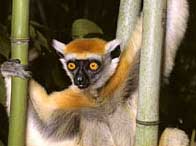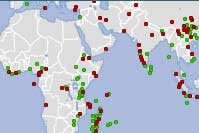 Researchers have compiled a map of regions around the world where approximately 800 species of animals and plants are on the brink of extinction unless urgent action is taken by humans.
Researchers have compiled a map of regions around the world where approximately 800 species of animals and plants are on the brink of extinction unless urgent action is taken by humans.
The list was assembled by a coalition of conservation groups. Most of the 800 species identified are found in only one location, predominantly within the tropical belt.
“This is a comprehensive collection of species at risk of extinction,” said Stuart Butchart, the global species program coordinator for Birdlife, a group involved in the report.
“Most of them live in only one area, making them highly vulnerable to human impact,” he added. “Protecting these areas is not our only objective; if we do not protect them, they will certainly disappear.”
Participating in the coalition are organizations such as the London Zoological Society, Conservation International, and the American Wetlands Conservation Group. Under the guidance of a relatively new organization, the Alliance for Zero Extinction (AZE), researchers have created a list of 595 areas, each containing at least one species classified as “endangered” or “critically endangered” according to the Red List criteria.
Each of these areas is either the sole habitat of that species or contains at least 95% of its known population. Some areas are home to more than one endangered species.
 |
|
Distribution areas of endangered species |
Since not all species on Earth have been studied or even identified, the list of 794 species includes only birds, mammals, reptiles, coniferous plants, and some groups of reptiles.
The majority of these critical species are found in tropical regions, and most are located in developing countries. Overall, they tend to be in areas with high population density, with some minority groups being strictly protected.
According to John Fa, the director of conservation science at Durrell Wildlife, working with communities is a key strategy for conservation efforts in these regions.
“Our strategy is not only to focus on animals but also to work alongside local communities to support their livelihoods.”
The AZE team has calculated the costs for conserving each of the 595 sensitive areas, noting that the figures vary widely, ranging from $470 to $3.5 million.
T. An


















































